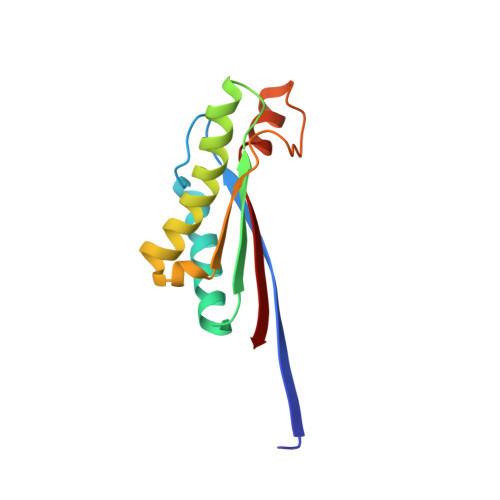Mechanism of anchoring of OmpA protein to the cell wall peptidoglycan of the gram-negative bacterial outer membrane
Park, J.S., Lee, W.C., Yeo, K.J., Ryu, K.S., Kumarasiri, M., Hesek, D., Lee, M., Mobashery, S., Song, J.H., Kim, S.I., Lee, J.C., Cheong, C., Jeon, Y.H., Kim, H.Y.(2012) FASEB J 26: 219-228
- PubMed: 21965596
- DOI: https://doi.org/10.1096/fj.11-188425
- Primary Citation of Related Structures:
3TD3, 3TD4, 3TD5 - PubMed Abstract:
The outer membrane protein A (OmpA) plays important roles in anchoring of the outer membrane to the bacterial cell wall. The C-terminal periplasmic domain of OmpA (OmpA-like domain) associates with the peptidoglycan (PGN) layer noncovalently. However, there is a paucity of information on the structural aspects of the mechanism of PGN recognition by OmpA-like domains. To elucidate this molecular recognition process, we solved the high-resolution crystal structure of an OmpA-like domain from Acinetobacter baumannii bound to diaminopimelate (DAP), a unique bacterial amino acid from the PGN. The structure clearly illustrates that two absolutely conserved Asp271 and Arg286 residues are the key to the binding to DAP of PGN. Identification of DAP as the central anchoring site of PGN to OmpA is further supported by isothermal titration calorimetry and a pulldown assay with PGN. An NMR-based computational model for complexation between the PGN and OmpA emerged, and this model is validated by determining the crystal structure in complex with a synthetic PGN fragment. These structural data provide a detailed glimpse of how the anchoring of OmpA to the cell wall of gram-negative bacteria takes place in a DAP-dependent manner.
Organizational Affiliation:
Division of Magnetic Resonance Research, Korea Basic Science Institute, Chungbuk, Korea.















